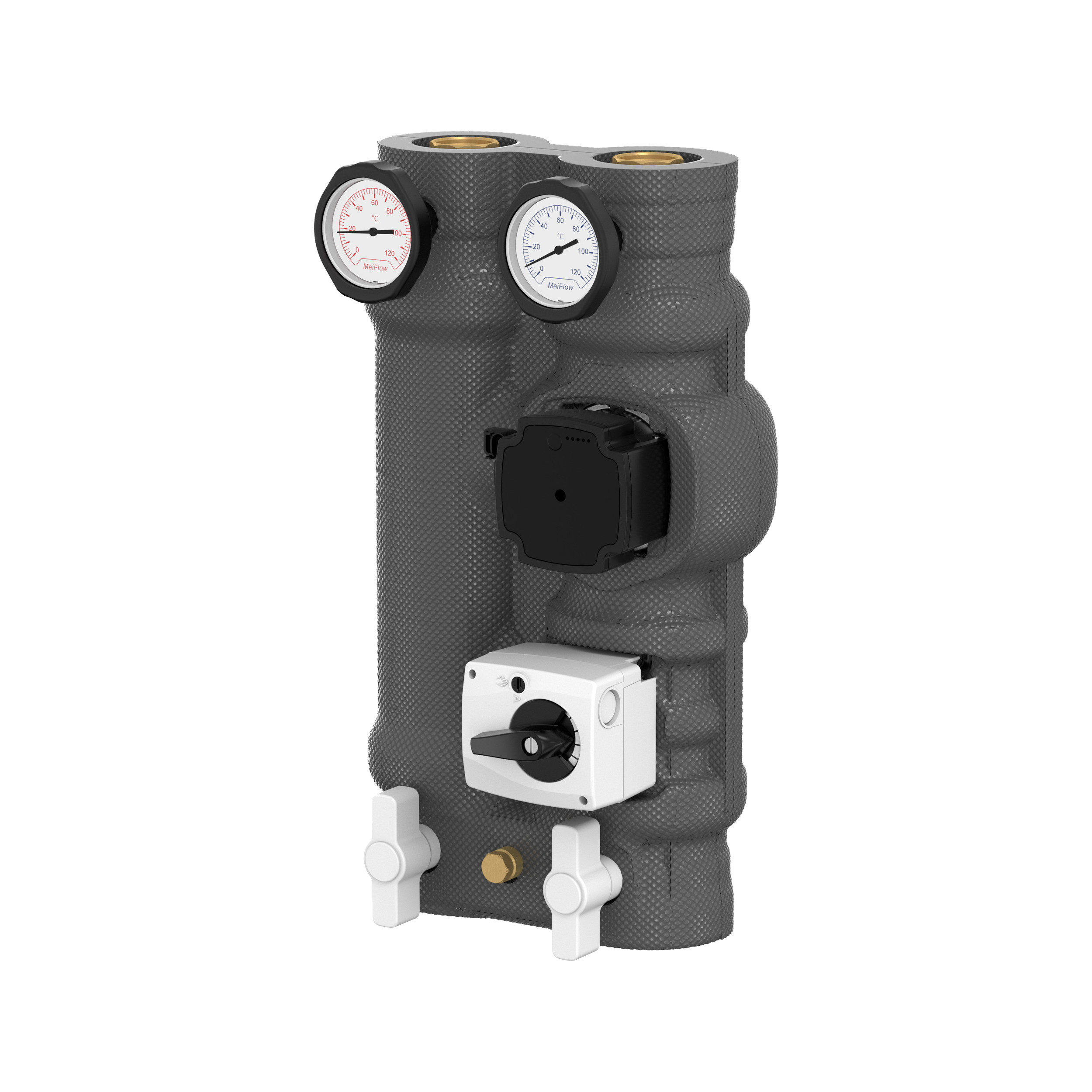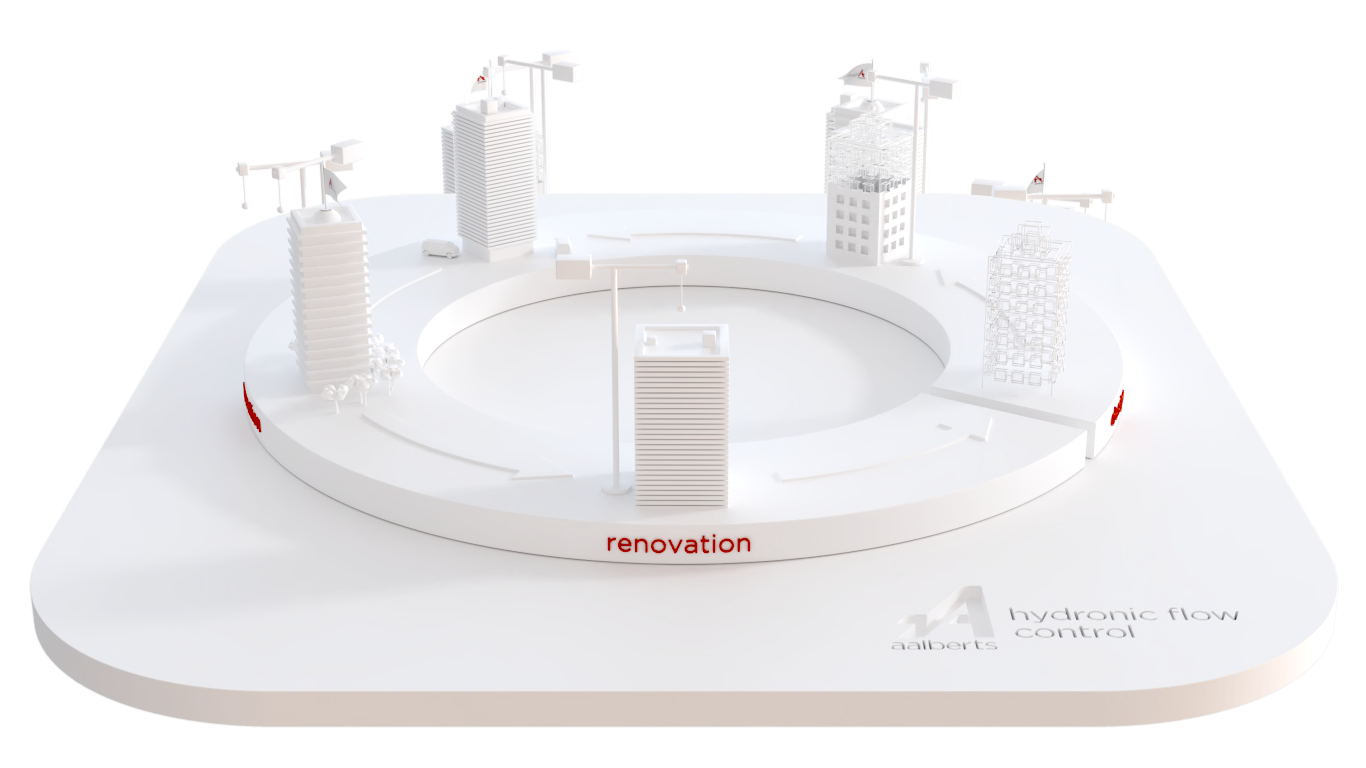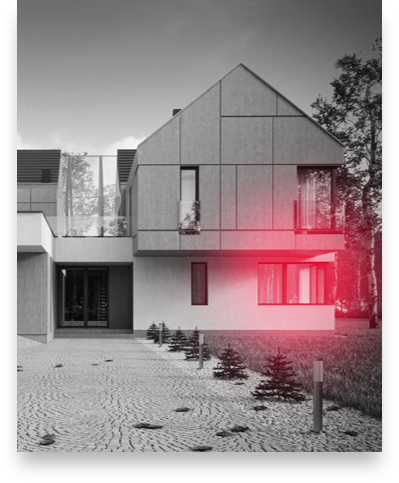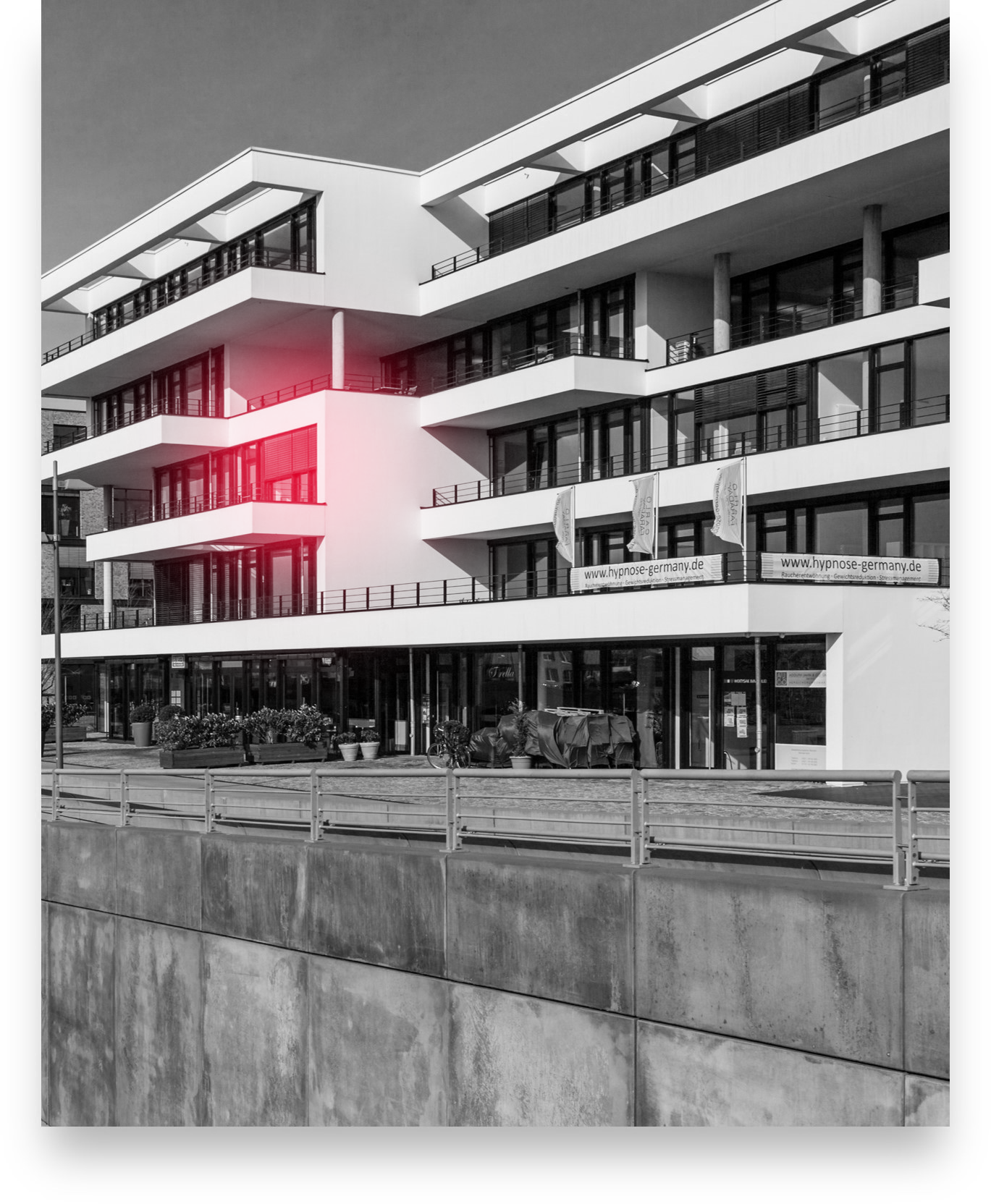building. climate. excellence.
building. climate. excellence.
In line with the objectives of the European Green Deal, we have 30 years to reduce our energy consumption by 45% and CO2 emissions by 55%. Buildings are one of the largest sources of energy consumption in Europe. Boosting their energy efficiency is key to cutting CO2 emissions. Heating accounts for most of the household energy consumption in the EU, representing 62.8% of the final energy consumption in the residential sector. Choosing the right heating solutions is pivotal.
Installation of heat pumps can drastically reduce buildings' energy consumption as they enable low temperature heating. Heat pumps emit up to 58% less carbon than gas boilers. Thus combining heat pumps with a low temperature emitter like underfloor heating, will maximise efficiency and lead to 20% energy savings.
Nonetheless, installing a heat pump does not solve all energy efficiency concerns. Optimum performance of the whole system is necessary.
40 %
20 %
according to the latest IEA analysis
Energy consumption by the heat pump installation needs to be as low as possible.
Such an installation consists of four parts: source, heat pump, distribution and delivery.
For optimal operation, they must all function properly and coordinate with each other.
A heat pump generally works with a much lower supply temperature (usually 35-55 °C) than a central heating system (normally 80 °C). This means conventional radiators and convectors may not provide enough energy to adequately heat spaces. Therefore, heat pumps are preferably combined with low temperature emitters, such as underfloor heating, LT radiators or LT convectors.
recommended products
A heat pump is more suitable for keeping rooms at a stable temperature than to quickly achieve a large temperature difference. A heat pump therefore supplies the highest efficiency when the difference between the temperature of the source and that of the delivery system is as small as possible. Such a low temperature difference (Delta T) between the supply and return pipes also provides greater comfort because the heat output is more even and the room is heated more evenly.
recommended products
Heat pump systems are vulnerable to air. Due to the low system temperature, removing air is more difficult but still a must! In the long term air causes corrosion and biofilm, which causes pipes to clog and the installation to wear out more quickly. Air also reduces heat transfer and slows down heating. The flow of the system water decreases and cold zones can develop. Energy consumption then increases while the comfort and lifespan of the system decreases.
recommended products
A heat pump works at low temperatures and has to pump up to four times more water than a central heating installation. It is therefore better to install pipes with a larger diameter. With that you also reduce the risk of clogging due to corrosion and scale. Corrosion reduces the pipe diameter. For example, 0.5 mm around the inside of a pipe makes the diameter 1 mm narrower. This would reduce a 1” pipe’s surface area by 8.6%, increasing energy consumption. Cleaning the installation can be done in different ways, e.g. with additives. Degassers are ideal for removing oxygen from the system water and thus prevent corrosion.
recommended products
It is also possible to cool buildings with heat pumps. The emitter devices must be suitable for dispensing cold. This can be done with, for example using an underfloor heating system, LT radiators, LT fan coil units or climate ceilings. Since the flow rate in cooling is different from heating, you have to set up the system properly. In addition it’s important that the pipes and fittings are watertight and insulated up to the level of the floor, in order to prevent condensation, in case the temperature in the system drops below the dew point.
recommended products

The challenge with a heat pump system is not so much the installation. Proper balancing is essential for the ultimate efficiency and comfort of the system. To ensure that a heat pump works efficiently and the provides the right level of heating, it is crucial to accurately adjust the system on the water side. Hydronic balancing or balancing is the adjustment of the water flow through the emitters (radiators, connectors and underfloor heating) is running. This determines, per room the exact amount of hot water needed to heat it properly.
recommended products
In general, a heat pump requires a high flow rate. That’s why it is essential to minimize resistance by separating dirt using dirt separators. After all, the lower the resistance, the less energy the heat pump uses. This energy saving can amount to 8%.
recommended products
A heat pump delivers most efficiency when the temperature differentials (between flow and return temperature) are as small as possible. Many starts and stops are unfavourable for the efficiency and life of a heat pump. To prevent this, a buffer vessel can be added that disconnects the heat pump from the
distribution system.
recommended products
Good room-by-room temperature control contributes considerably to energy savings. When the end user regulates the temperature per room, each room gets the desired, optimum temperature. To do this, install thermostatic valves and heads. Even better is to use ‘smart’ thermostats and (programmable) radiator heads to heat rooms only when there people are present and shut-down heating when nobody
is present.
recommended products
A heat pump generally works with a much lower supply temperature (usually 35-55 °C) than a central heating system (normally 80 °C). This means conventional radiators and convectors may not provide enough energy to adequately heat spaces. Therefore, heat pumps are preferably combined with low temperature emitters, such as underfloor heating, LT radiators or LT convectors.
recommended products
A heat pump is more suitable for keeping rooms at a stable temperature than to quickly achieve a large temperature difference. A heat pump therefore supplies the highest efficiency when the difference between the temperature of the source and that of the delivery system is as small as possible. Such a low temperature difference (Delta T) between the supply and return pipes also provides greater comfort because the heat output is more even and the room is heated more evenly.
recommended products
Heat pump systems are vulnerable to air. Due to the low system temperature, removing air is more difficult but still a must! In the long term air causes corrosion and biofilm, which causes pipes to clog and the installation to wear out more quickly. Air also reduces heat transfer and slows down heating. The flow of the system water decreases and cold zones can develop. Energy consumption then increases while the comfort and lifespan of the system decreases.
recommended products
A heat pump works at low temperatures and has to pump up to four times more water than a central heating installation. It is therefore better to install pipes with a larger diameter. With that you also reduce the risk of clogging due to corrosion and scale. Corrosion reduces the pipe diameter. For example, 0.5 mm around the inside of a pipe makes the diameter 1 mm narrower. This would reduce a 1” pipe’s surface area by 8.6%, increasing energy consumption. Cleaning the installation can be done in different ways, e.g. with additives. Degassers are ideal for removing oxygen from the system water and thus prevent corrosion.
recommended products
It is also possible to cool buildings with heat pumps. The emitter devices must be suitable for dispensing cold. This can be done with, for example using an underfloor heating system, LT radiators, LT fan coil units or climate ceilings. Since the flow rate in cooling is different from heating, you have to set up the system properly. In addition it’s important that the pipes and fittings are watertight and insulated up to the level of the floor, in order to prevent condensation, in case the temperature in the system drops below the dew point.
recommended products

The challenge with a heat pump system is not so much the installation. Proper balancing is essential for the ultimate efficiency and comfort of the system. To ensure that a heat pump works efficiently and the provides the right level of heating, it is crucial to accurately adjust the system on the water side. Hydronic balancing or balancing is the adjustment of the water flow through the emitters (radiators, connectors and underfloor heating) is running. This determines, per room the exact amount of hot water needed to heat it properly.
recommended products
In general, a heat pump requires a high flow rate. That’s why it is essential to minimize resistance by separating dirt using dirt separators. After all, the lower the resistance, the less energy the heat pump uses. This energy saving can amount to 8%.
recommended products
A heat pump delivers most efficiency when the temperature differentials (between flow and return temperature) are as small as possible. Many starts and stops are unfavourable for the efficiency and life of a heat pump. To prevent this, a buffer vessel can be added that disconnects the heat pump from the
distribution system.
recommended products
Good room-by-room temperature control contributes considerably to energy savings. When the end user regulates the temperature per room, each room gets the desired, optimum temperature. To do this, install thermostatic valves and heads. Even better is to use ‘smart’ thermostats and (programmable) radiator heads to heat rooms only when there people are present and shut-down heating when nobody
is present.
recommended products

Approximately 40% of all CO2 emissions in Europe are attributed to the provision of hot water and space heating for buildings. This is mainly due to the fact that inefficient gas and oil heating systems, which are harmful to the climate, are still being used in many existing buildings.
To achieve the ambitious climate protection goals, it is necessary to equip not only new, but also existing buildings with a heat pump system. In older, existing buildings, good efficiency values are also possible! More and more heat pumps are installed in existing buildings to provide hot water and room heating during renovation.
Besides renovating the energy systems in old buildings, it is also efficient to upgrade old heat pumps in existing buildings. With the right selection of components, the efficiency can be improved drastically.
Are you looking to install a heat pump system in an existing building? We are happy to advise you
free of charge

Installing heat pumps in small residential units requires accompanying products that work efficiently for <10 kW. Here's a quick look at products that will help realise the highest efficiency.
view all suitable products
For heat pumps in large residential buildings, accompanying products should work between >11 kW to <74kW, depending on the size of the building. Here's a quick look at products that will help realise the highest efficiency.
view all suitable products
In commercial buildings, accompanying products should work >75kW. Here's a quick look at products that will help realise the highest efficiency.
view all suitable products
Installing heat pumps in small residential units requires accompanying products that work efficiently for <10 kW. Here's a quick look at products that will help realise the highest efficiency.
view all suitable products
For heat pumps in large residential buildings, accompanying products should work between >11 kW to <74kW, depending on the size of the building. Here's a quick look at products that will help realise the highest efficiency.
view all suitable products
In commercial buildings, accompanying products should work >75kW. Here's a quick look at products that will help realise the highest efficiency.
view all suitable products

